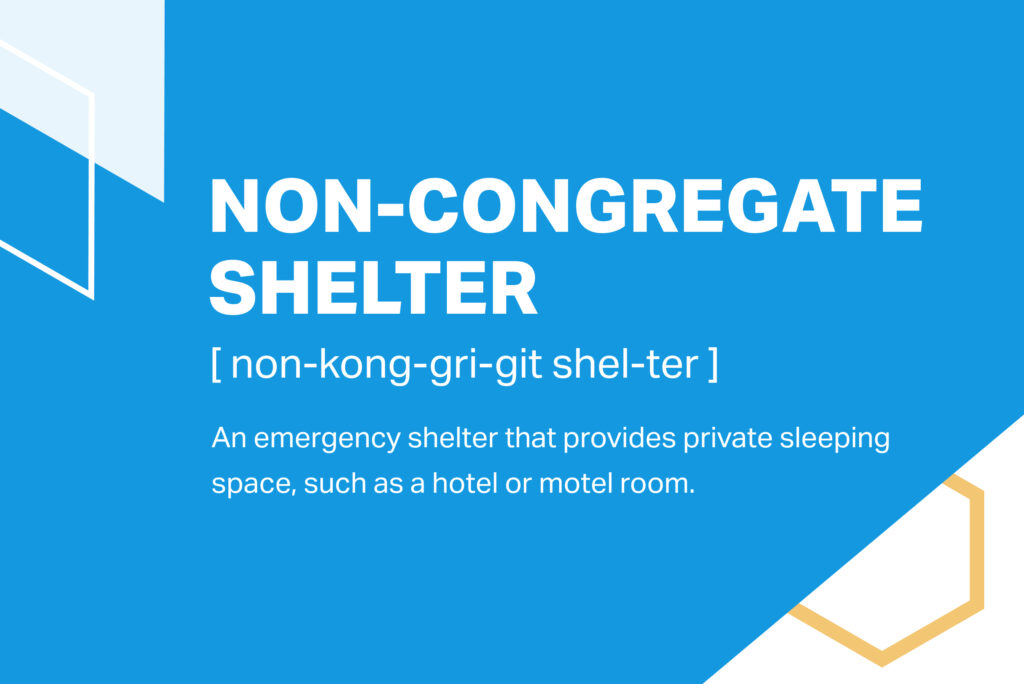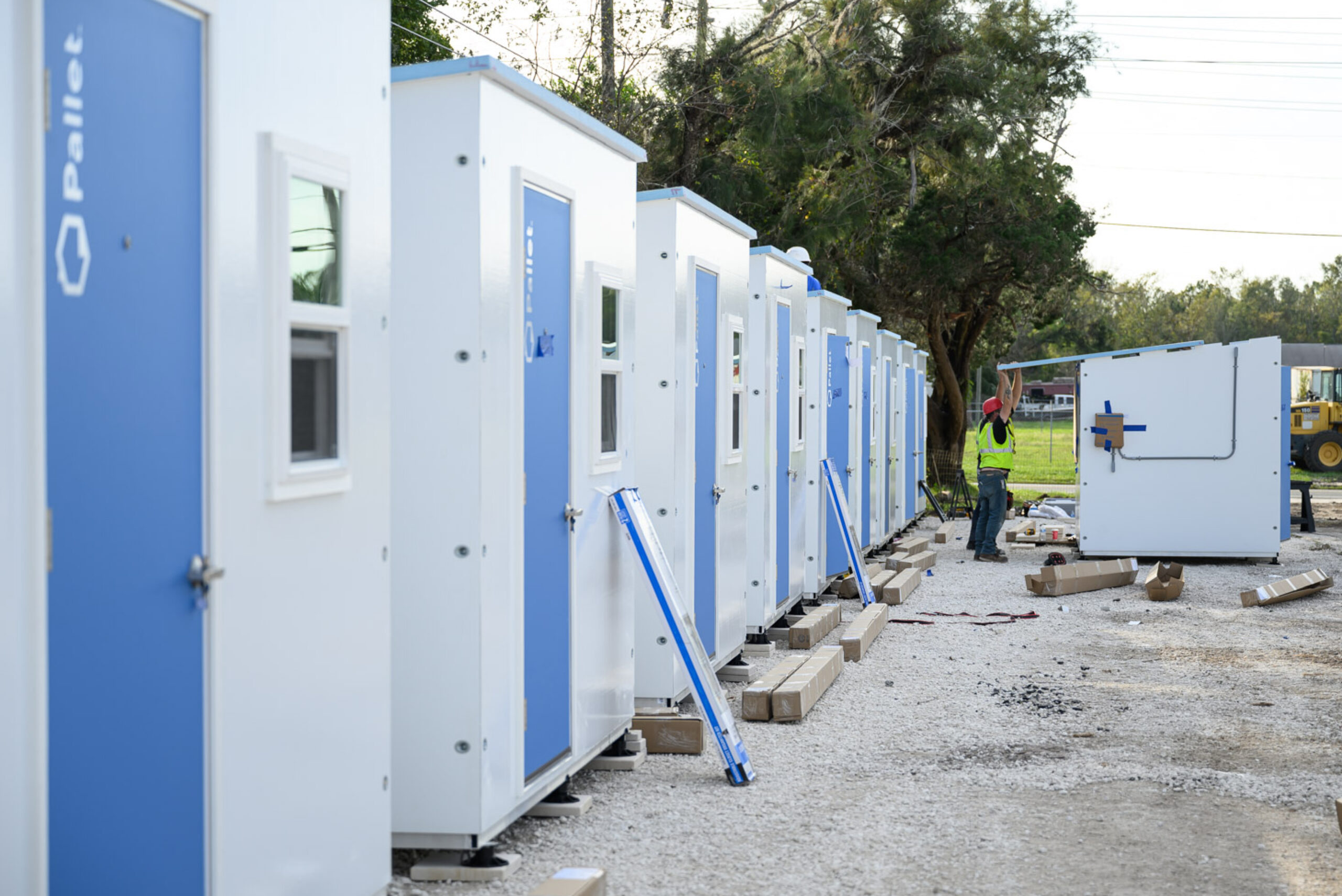Homelessness Glossary Part II: 12 terms to know
November 21, 2022

Homelessness is a complex, nuanced issue that takes time to understand fully. Organizations, experts, and advocates within the homelessness field use specific words and phrases that aren't common knowledge. To help bridge the information gap, we've put together another list of terms to help you better understand homelessness-related issues.
The list addresses metrics the federal government uses to determine who qualifies for aid, programs available to states to help unhoused people get back on track, and more.
1. Non-congregate shelter
A non-congregate shelter is an emergency shelter that provides private sleeping space, such as a hotel or motel room. Pallet shelters are in this category because people using them have their own private space and typically aren't sharing it with a stranger.
2. Area Median Income (AMI) / Median Family Income (MFI)
AMI and MFI are often used interchangeably and are the median household in a given region. This statistic is developed by the U.S. Department of Housing and Urban Development (HUD) to determine applicants' eligibility for specific federal housing programs.
3. Rapid rehousing
Rapid rehousing is a housing model designed to provide temporary housing assistance to people experiencing homelessness. This short-term intervention moves people out of homelessness quickly and into permanent housing.
4. Housing choice voucher (Section 8)
The housing choice voucher program is the federal government's major program for assisting very low-income families, the elderly, and people with disabilities so they can afford safe and sanitary housing in the private market. Housing choice vouchers are administered locally by public housing agencies (PHAs). The PHAs receive federal funds from HUD to administer the voucher program.
5. Emergency Housing Voucher
The Emergency Housing Voucher (EHV) program is available through the American Rescue Plan Act (ARPA). Through EHV, HUD is providing 70,000 housing choice vouchers to local Public Housing Authorities (PHAs) to assist: individuals and families who are homeless, at risk of homelessness, fleeing, domestic violence victims, human trafficking survivors, or were recently homeless or have an elevated risk of housing instability
6. Housing First
The Housing First model prioritizes providing permanent housing to people experiencing homelessness. This serves as a platform for them to pursue personal goals and improve their quality of life. This approach is guided by the belief that people need basic necessities like food and a place to live before attending to anything less critical, such as getting a job, budgeting properly, or attending to substance use issues.
7. Single Room Occupancy (SRO)
An SRO is a residential property that includes multiple single occupancy units. If the unit doesn't have a food preparation area or a bathroom, those facilities are shared. During the mid-70s and 80s, there was a sharp decline in SROs in cities such as Los Angeles, Seattle, and New York. This housing option reduction is considered a contributing factor in the rise in homelessness.
8. Affordable Housing
According to federal government standards, housing and utilities should cost no more than 30% of your total income. Publicly subsidized rental housing usually has income restrictions, dictating that tenants cannot earn more than 60% of the area median income. Homelessness rates rise faster in cities where residents spend more than one-third of their income on rent.
9. Temporary Assistance for Needy Families (TANF)
The TANF program allows states and territories to operate programs designed to help low-income families with children achieve economic self-sufficiency. States use TANF to fund monthly cash assistance payments to low-income families with children and a wide range of services. The U.S. Department of Health & Human Services administers the funds.
10. Supplemental Nutrition Assistance Program (SNAP)
SNAP is a federal program that provides nutrition benefits to low-income individuals and families used at stores to purchase food. The program is administered by the USDA Food and Nutrition Service (FNS) through its nationwide network of FNS field offices.
11. McKinney-Vento Homeless Assistance Act
The McKinney-Vento Homeless Assistance Act is a federal law created to support the enrollment and education of students experiencing homelessness. McKinney-Vento is intended to provide homeless students the same educational opportunities as housed students by removing as many barriers to learning for homeless students as possible.
12. Hostile architecture
Hostile architecture limits how people experiencing homelessness use public spaces and discourages them from staying in an area for too long. Examples include a bench with an armrest in the middle, spikes, and boulders. Here's more on the impact of hostile architecture.


